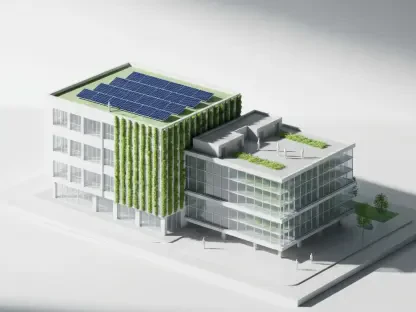In the bustling heart of Bromley-by-Bow, London, an exceptional event marked a pivotal moment in sustainable urban living. The final phase of the Leaside Lock development, spearheaded by The Guinness Partnership, celebrated its topping-out ceremony, signifying the completion of a monumental housing project intended to provide around 965 homes. This significant project is designed to blend affordability with sustainability, featuring advanced technology to maximize energy efficiency. Funded in collaboration with the Mayor of London, the initiative is not only a boost for affordable housing but also sets a standard in eco-friendly construction practices.
Highlights from the Topping-Out Ceremony
The celebration brought together an array of stakeholders and community members, all in recognition of the substantial impact the Leaside Lock development has had on addressing London’s housing challenges. With sustainability as a central theme, many speakers highlighted the project’s incorporation of photovoltaic panels and a combined heat and power system. These features are pivotal in enhancing energy efficiency and reducing residents’ costs, reflecting the project’s innovative approach to urban housing.
During the event, Kevin Williams of The Guinness Partnership shared insights into the organization’s commitment to providing not just homes but genuine opportunities for community growth. Lorraine Casey from Lovell Partnerships echoed these sentiments, emphasizing the collaborative spirit that enabled the project to become a reality. These speeches provided attendees with a better understanding of the broader vision behind the Leaside Lock development.
Engaging Discussions and Workshops
The topping-out ceremony at Leaside Lock was more than a celebration; it was an interactive experience with various engaging discussions and workshops. Panel discussions explored diverse perspectives on urban housing, underlining both the challenges and opportunities of sustainable developments. Experts shared their insights into adopting innovative construction methods and the real-world applications of sustainable urban living.
Workshops held during the event encouraged participants to explore concepts and models related to sustainability in housing. These sessions offered a platform for interactive learning, allowing attendees to engage directly with the ideas that drive projects like Leaside Lock. Participants delved into how these advances influence community benefits, highlighting the ways forward in sustainable development.
Unveiling Innovations in Housing Technologies
A key highlight of the event was the demonstration of cutting-edge technologies being implemented in the project. Features included operational showcases of photovoltaic panels and integrated heat systems, underscoring the project’s commitment to reducing its environmental impact. These technologies set an example for future housing developments, illustrating how sustainability can be effectively woven into housing design.
Furthermore, Leaside Lock offers remarkable amenities, such as a gym, café, convenience store, and communal workspaces. With a sizable commercial space and an urban park, the development supports vibrant community life, extending its commitment to sustainability beyond energy-saving measures by enriching the living experience for all its residents.
Implications and Future Legacy of the Leaside Lock Project
Reflecting on the successful event, the Leaside Lock development sets an inspiring precedent for future sustainable housing initiatives. Its comprehensive approach addresses immediate housing needs while also planning for a future where sustainability and community engagement are paramount. Through its innovative design and community-centric facilities, the project sketches a roadmap for future urban housing endeavors in London.
As the Leaside Lock project moves from construction to occupancy, it provides a model for future developments by demonstrating the potential of sustainable housing to improve lives and foster community growth. The legacy of this project lies not just in the physical homes it has created but in its lasting impact on the housing sector’s move toward environmentally conscious development. By integrating community resources and reducing environmental footprints, this development offers insights for urban housing projects worldwide.









